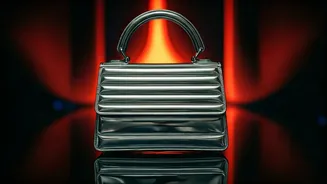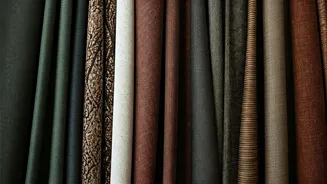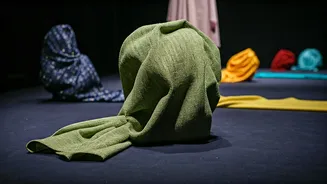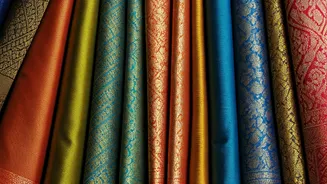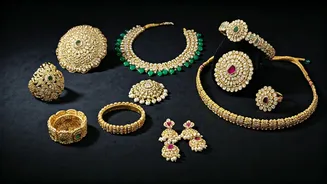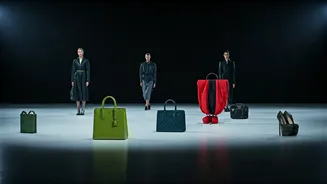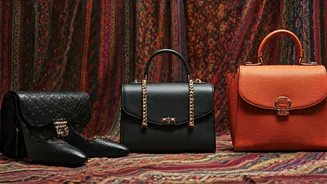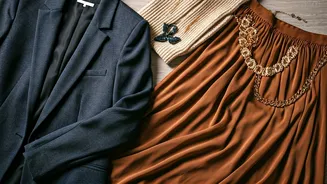Runway Highlights
The fashion runways around the world showcased a diverse array of styles. Designers presented collections that were both innovative and reflective of current
social trends. Various fashion houses focused on sustainability, incorporating eco-friendly materials and practices into their designs. Bold colors and unique silhouettes were prominent. These collections aimed to redefine the modern wardrobe, catering to a range of tastes and preferences. The designs emphasized comfort and functionality without sacrificing style. A significant shift was observed towards inclusive sizing and diverse representation on the runway. This movement reflected a broader desire for more realistic and relatable fashion standards. These shows not only displayed clothes, but also conveyed messages about inclusivity, sustainability, and the evolving roles of fashion in society. Many designers explored the intersection of fashion and technology, experimenting with innovative fabrics and digital presentations. The runway reflected a blend of creativity, social awareness, and forward-thinking design.
Key Trend Alerts
Several key trends emerged, influencing wardrobes. One dominant trend involved oversized tailoring, with blazers, trousers, and coats taking on a more relaxed fit. Another significant trend was the resurgence of vintage styles, with influences from the 1970s and 1990s. This included high-waisted jeans, flared trousers, and retro prints. Accessories also played a vital role, particularly statement belts, chunky jewelry, and bold handbags. Sustainability became a core theme, with many designers focusing on eco-friendly materials such as organic cotton, recycled fabrics, and innovative plant-based alternatives. Colors ranged from vibrant hues like electric blue and fuchsia to more subdued tones like earthy greens and soft pastels. These color palettes provided versatility for different seasons and personal styles. Minimalism remained relevant, focusing on clean lines, neutral colors, and timeless pieces that offer a practical, versatile wardrobe. These trends are changing the fashion scene.
Celebrity Style Watch
Celebrities influenced fashion trends. Several celebrities became fashion icons by showcasing designer collections and setting style benchmarks. Many showcased a mix of high-fashion and street style looks. They often embraced bold colors, eye-catching accessories, and unique combinations, influencing fashion choices. Several celebrities became known for their ability to blend casual wear with luxury items. They often endorsed sustainable brands, raising awareness about ethical fashion. Celebrity endorsements also drove specific trends. Their choices, from red carpet gowns to everyday wear, provided inspiration. Their influence extended beyond clothing. This included hairstyles, makeup, and even the way they carried themselves. These celebrities demonstrated how fashion can be an extension of one's personality and values.
Emerging Designers
New talents continued to enter the fashion industry, offering fresh perspectives. These designers frequently incorporate innovative techniques and materials. They often address social and environmental concerns through their collections. Their designs often reflect a mix of cultures, blending traditional craftsmanship with contemporary aesthetics. Many emerging designers utilize social media to build their brands, connecting directly with their audiences and generating buzz. Their collections typically offer unique perspectives, challenging conventional norms and pushing boundaries. Their approach is focused on sustainability, ethical production, and reducing waste. They provide affordable, fashionable options. This blend of creativity, innovation, and social awareness is reshaping the fashion industry. These designers are paving the way for the future of fashion.
Impact of Social Media
Social media platforms have transformed the way people discover and interact with fashion. Platforms such as Instagram, TikTok, and Pinterest allow users to share their styles. Influencers play a huge role in setting trends. These platforms offer an avenue for brands to connect with audiences. Social media allows for instant feedback. Digital fashion has also emerged, with virtual clothing and accessories. It provides new avenues for creative expression and brand engagement. Social media democratizes fashion. Trends spread rapidly. The industry is responding by creating digital content. Social media also influences consumer behavior. It enables access to diverse content from around the globe. Social media's impact on fashion goes beyond influencing trends; it facilitates community and inclusivity.
